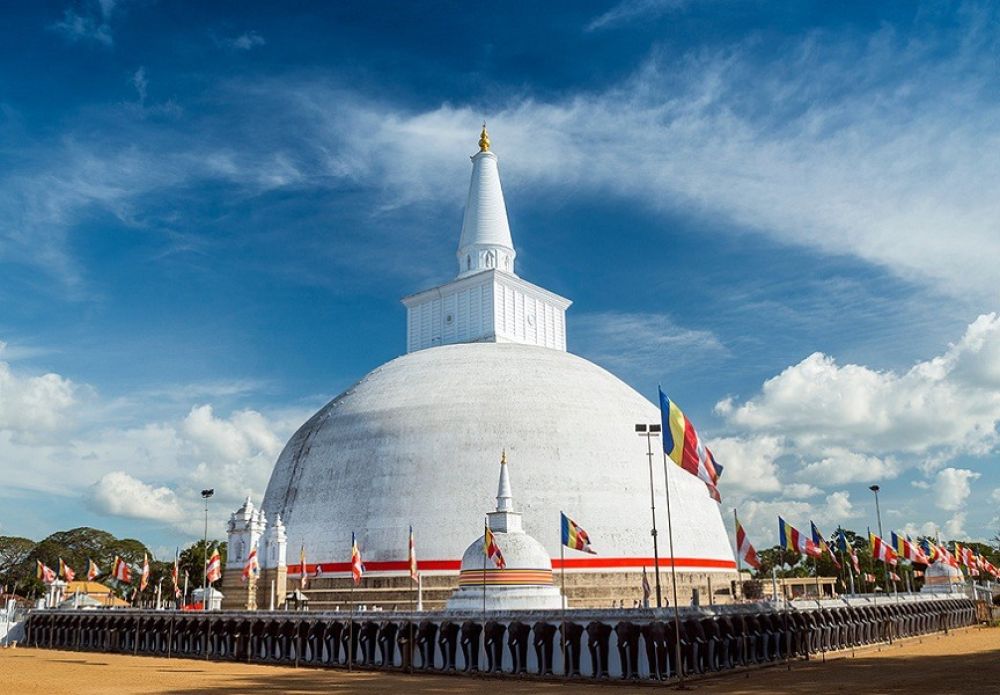

The Ruwanwelisaya stupa, nestling in the ancient city of Anuradhapura, Sri Lanka, stands as one of the most remarkable monuments of Buddhist heritage and a cornerstone of Sri Lanka's rich tourism tapestry. Erected by King Dutugemunu after his defeat of the Tamil king Elara, its construction began in the 140 B.C. and was completed after the king's death. It was part of the monarch's legacy, signifying not only his commitment to Buddhism but also his vision of a unified Sri Lanka under a single sovereign.
The history of tourism at Ruwanwelisaya is interwoven with the pilgrimage tradition. Since ancient times, this magnificent stupa has attracted countless devotees and visitors. With the advent of colonialism, European explorers and archaeologists began exploring the ancient cities of Sri Lanka. The documentation and studies of these scholars in writings and photographs have played a vital role in introducing the monument's grandeur beyond the island's shores.
In the late 19th and early 20th centuries, Anuradhapura, along with Ruwanwelisaya, gained prominence among archaeological circles, leading to increased interest and visitation. With Sri Lanka's independence and subsequent developments in infrastructure and tourism services, Ruwanwelisaya’s fame grew, marking it as a must-visit destination for both local and global travelers.
The latest tourism trends at Ruwanwelisaya reflect the global shift towards experience-based and sustainable travel. Tourists are now seeking more authentic experiences, showing an interest in understanding the historical and spiritual significance of this ancient stupa. There is also a trend towards smaller, more personalized tour groups that can provide in-depth insights into the site's history.
Sustainability is another key aspect, with both visitors and authorities showing greater concern for the conservation of this UNESCO World Heritage Site. Efforts are being made to ensure that tourist activities do not adversely affect the stupa's integrity. The introduction of audio guides and mobile apps also reflects the growing importance of digitalization in enhancing the visitor experience, providing informative content in multiple languages without the need for intrusive physical signage.
Moreover, Anuradhapura, and by extension Ruwanwelisaya, is now often incorporated into broader cultural circuit tours that include other historical sites in Sri Lanka, promoting a comprehensive cultural and educational experience.
Ruwanwelisaya continues to be not just a venerable place of worship for Buddhists but also a beacon for cultural enthusiasts and history buffs. As tourism in Sri Lanka evolves, the significance of Ruwanwelisaya in Anuradhapura's historical tourism landscape remains undiminished, drawing the attention of visitors from around the world keen to witness its timeless beauty and historical profundity.